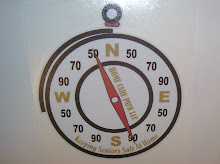I know you are saying the health care system has changed but I still do not see where. The main drive comes from federal pay sources (The Centers for Medicare and Medicaid) who are pushing acuity down the continuum of care. Another way of saying this same thing is an individual is required to be severely ill to be admitted to the hospital.
Here is an example. An 86 year old female begins having bright red bloody stools about 5pm in the evening. Throughout the evening and in to the next morning she has 5 bright red bloody stools with gel like floaters. She has never had blood in her stool before. Well the neighbors being concerned about blood loss contact the clinic and talk with a triage nurse. The triage nurse suggests an ambulance ride, but the neighbor states being comfortable with taking the elder female in to the emergency room of the hospital. The triage nurse sends communication to the ER they are sending her in.
On the ride the 86 year old female verbalizes her fear of having a bowel movement in her pants. When I have to go, I barely make it to the toilet. Despite the fresh snow on the road they arrive safely at the hospital ER.
Once registered and wrist band in place the ER staff begin to conduct their diagnostic tests. IV access, drawing blood to assess levels, digital rectal exam. The defined blood values are on the low end of normal but ok. The digital rectal exam confirms bright red blood, no need to venture further.
There is no staff capable of performing the next step, a scope which inserts a camera into the bowel which shows on a monitor for viewing. Despite being NPO (no food by mouth just sip of coffee) for 12 plus hours, the staff is not available to perform the needed diagnostic test.
The emergency room staff set up an appointment in four days with the outpatient GI department for the scope and possible repair. Because the senior is not in respiratory distress, or shocky a hospital admission is not appropriate. Social services determines the person could come in to the hospital so is not really home bound and not in need of skilled in home care with this contact.
The neighbor driving the 86 year old female becomes visibly upset, questioning since when does a hospital only care for the most severely ill in the community. The hospitals are turning away increasingly ill people who still require the help of another. The 86 year old female reaches over and clutches his hand and thanks him for being with her in the emergency room.
The 86 year old female with bloody stool and the scared neighbor stop at the pharmacy on the way home to pick up the Go Litely prescribed for the GI scoping procedure. This is about a gallon of laxative that she must drink to clean herself out before the outpatient procedure. The neighbor complains to the home town pharmacy staff that she is so weak now he is afraid to leave her alone. The neighbor explains that the ER staff said they could not admit her to the hospital just to provide supportive care.
The pharmacy staff suggest the neighbor contact a supportive care agency (www.homecarepath.com) who can send staff over and help her when you are busy. The pharmacy staff goes even further and suggests the 86 year old female talk to PATH ALONG about having help during the procedure. The pharmacy staff states the opinion that more and more people who are not sick enough to go to the hospital still need the help of another.
Hospital provides a skilled level of acute care defined by the source of pay. Supportive care agencies (www.homecarepath.com) deliver a service that helps individuals with chronic long term needs. PATH ALONG is an original Wisconsin model (service set) that connects inpatient providers to community staff who support the patient during health system transitions.
Saturday, December 29, 2012
Subscribe to:
Post Comments (Atom)

No comments:
Post a Comment